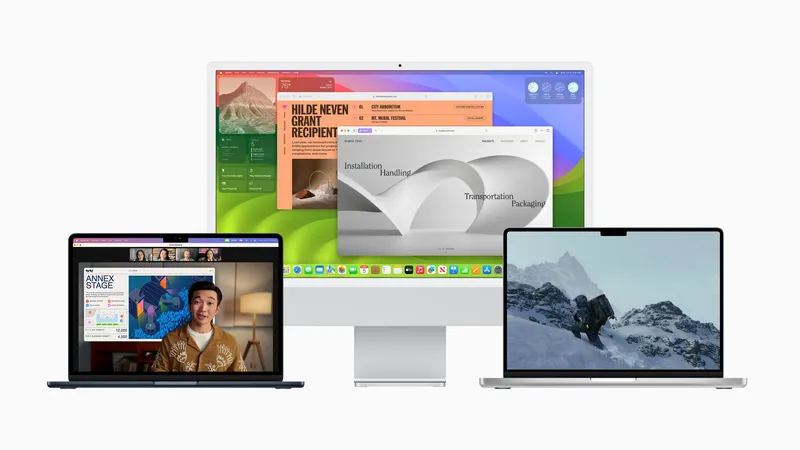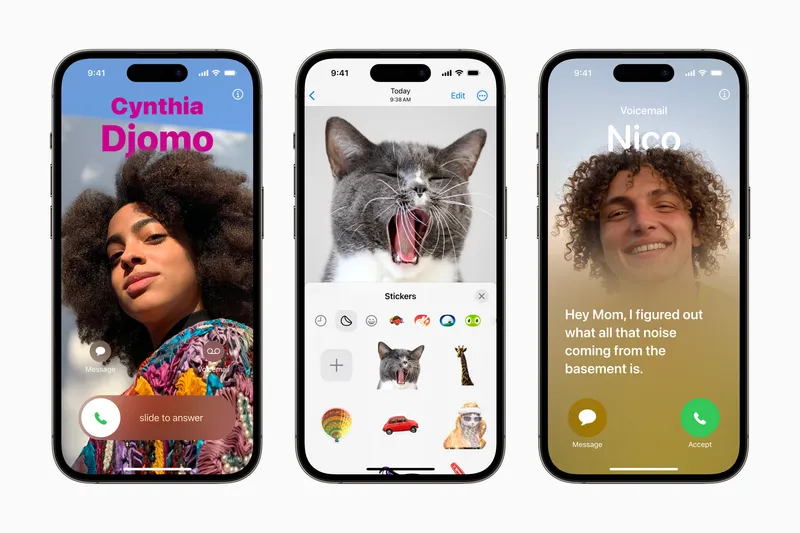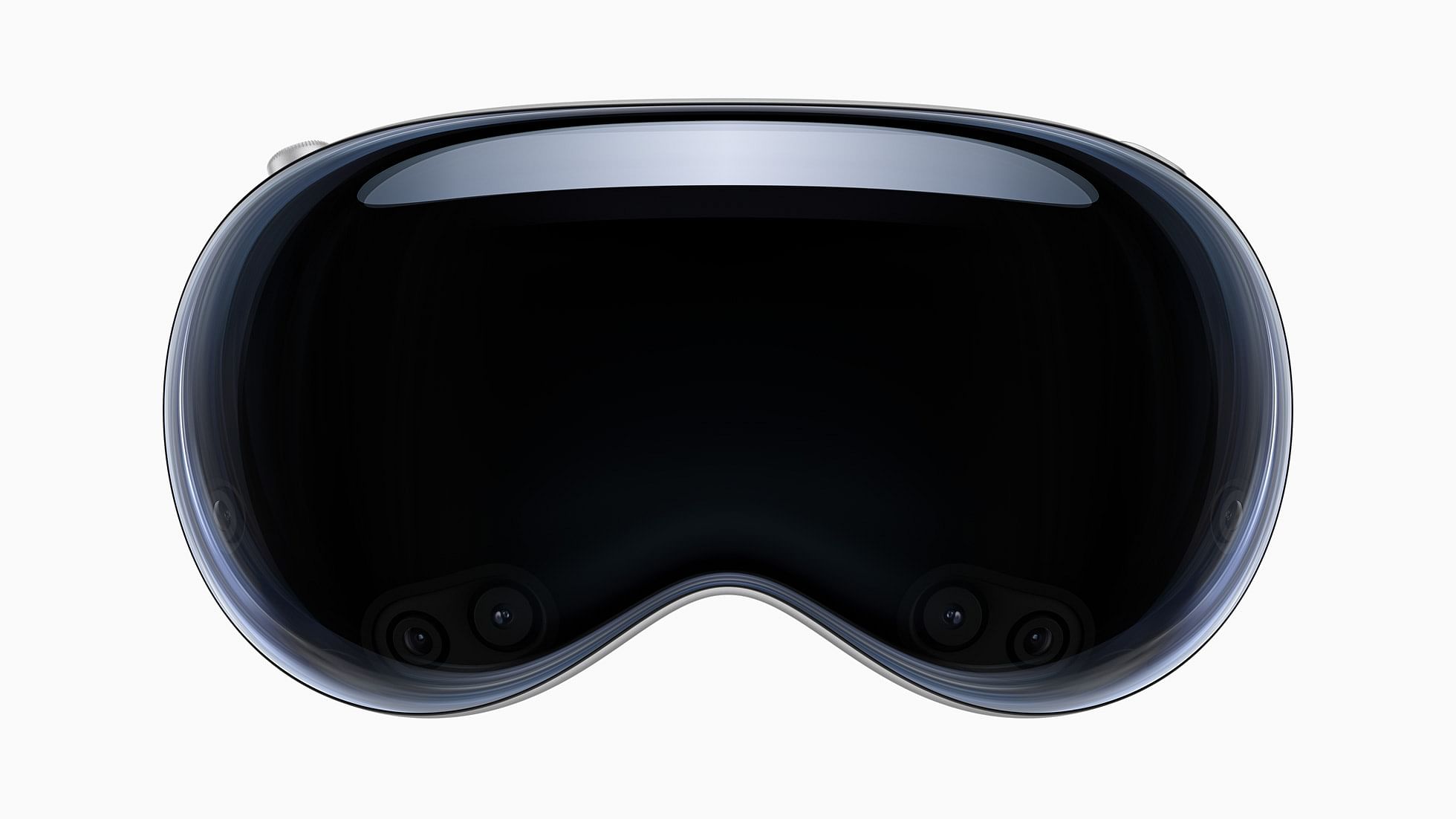Apple kicked off this year’s Worldwide Developers Conference on Monday with its highly-anticipated mixed reality headset Vision Pro. This marks the company’s first significant product expansion since the introduction of Apple Watch in 2015.
Alongside the headset, which is said to be Apple’s first ‘spatial computer’, the company unveiled several hardware updates, including a 15-inch Macbook Air, a new Mac Studio and Mac Pro, as well as M2 Ultra, a new system on a chip (SoC). Apple also provided a sneak peek into the upcoming versions of macOS, iOS, iPadOS, watchOS, and tvOS, which drive its diverse range of devices.
Vision Pro
Apple Vision Pro blends digital content with the real world, keeping users connected and engaged. It enables interaction with favourite apps, captures and relives memories, offers entertainment through TV shows and movies, and facilitates FaceTime connections.
“Today marks the beginning of a new era for computing,” said Tim Cook, Apple’s CEO. “Just as the Mac introduced us to personal computing, and iPhone introduced us to mobile computing, Apple Vision Pro introduces us to spatial computing.
With visionOS, users can navigate and interact with spatial content using intuitive input methods controlled by their eyes, hands, and voice. They can navigate apps by using gestures such as eye gaze, finger taps for selection, wrist flicks for scrolling, and voice commands for dictation.
The sleek design of Apple Vision Pro includes a single piece of three-dimensionally formed and polished glass, acting as an optical lens for its cameras and sensors. This glass integrates with a custom aluminium alloy frame and a modular system of parts, including the light seal and head band, providing a tailored fit for a diverse range of users.
Vision Pro features an ultra-high-resolution display system packing 23 million pixels across dual screens. Users with vision correction needs can ensure visual fidelity and eye-tracking accuracy with ZEISS Optical Inserts. It has an advanced spatial audio system that adapts to the environment, delivering personalised sound through dual-driver audio pods placed next to each ear.
Powered by Apple silicon in a unique dual-chip design—M2 and R1, Vision Pro combines standalone performance with real-time processing of input from 12 cameras, five sensors, and six microphones, creating an immersive experience.
According to Apple, the headset is designed for all-day use when plugged in. It can also provide up to two hours of usage with an external battery.
Apple Vision Pro has a new App Store, enabling users to explore a wide range of apps and content. They can also access familiar iPhone and iPad apps that seamlessly integrate with Vision Pro’s input system.
Starting at $3,499 (Rs 2.9 lakh) in the US, Apple Vision Pro will be available for purchase early next year on apple.com and at select Apple Store locations in the US, with availability expanding to more countries later, according to Apple.
15-inch Macbook Air
The new MacBook Air has a 15.3-inch Liquid Retina display, offering up to 500 nits of brightness and support for a billion colours. Powered by Apple’s M2 chip, it features an 8-core CPU (with four performance cores and four efficiency cores), a 10-core GPU for graphics performance, and a 16-core Neural Engine. The power-efficient M2 chip provides a battery life of up to 18 hours.
Enhancing the audio experience, the MacBook Air has a new six-speaker sound system that immerses users in Spatial Audio while enjoying music and movies. It is equipped with a 1080p FaceTime HD camera for high-quality video calls and conferencing.
The MacBook Air offers features like MagSafe charging, two Thunderbolt ports for connecting accessories and external displays up to 6K resolution, and a 3.5mm headphone jack. Available in midnight, starlight, silver, and space grey, the 15-inch MacBook Air with the M2 chip starts at Rs 1,34,900.

Image credit: Apple
Mac Studio and Mac Pro
Apple’s hardware offerings expanded with the introduction of the new Mac Studio and Mac Pro. The Mac Studio, equipped with M2 Max and the new M2 Ultra, offers significant performance improvements and enhanced connectivity in a compact design. Apple claims that the Mac Studio with M2 Ultra is upto three times faster than the previous-generation model featuring M1 Ultra.
The Mac Pro, now featuring M2 Ultra, combines the performance of Apple’s most powerful chip with the flexibility of PCIe expansion. According to Apple, the M2 Ultra-based Mac Pro outperforms the previous-generation Intel-based model by up to 3 times.
With up to 192GB of unified memory, both the Mac Studio with M2 Ultra and the Mac Pro can handle demanding workloads.
The new Mac Studio and Mac Pro are now available for ordering. The Mac Studio starts at Rs 209,900, while the Mac Pro is offered in both tower enclosure (starting at Rs 729,900) and rack enclosure (starting at Rs 779,900) options.
M2 Ultra
The M2 Ultra, which is Apple’s largest and most capable chip, brings significant performance improvements to the Mac and completes the M2 family. It uses a second-generation 5-nanometer process and leverages Apple’s UltraFusion technology to double the performance by connecting two M2 Max chips.
With 134 billion transistors, the M2 Ultra surpasses the M1 Ultra by 20 billion transistors. It boasts a unified memory architecture that supports up to 192GB of capacity, a 50% increase compared to the M1 Ultra. The M2 Ultra also offers a memory bandwidth of 800GB/s, twice that of the M2 Max. Additionally, it features a 20% faster CPU, a larger GPU with up to 30% faster performance, and a Neural Engine that operates up to 40% faster than the M1 Ultra, according to Apple.
macOS Sonoma
Apple also provided a sneak peek into macOS Sonoma, the latest version of its desktop operating system, packed with exciting features.
One notable addition is the ability for users to place widgets directly on the desktop, allowing for easy interaction with just a click. With the Continuity feature, users can access the iPhone widgets on their Mac, further expanding their options.
In macOS Sonoma, video conferencing becomes more immersive with new features designed to enhance remote presentations. The Presenter Overlay places the presenter on top of the shared content, improving the connection between the speaker and the audience. Additionally, Reactions introduces gesture-triggered video effects of cinematic quality, adding an element of fun and engagement to video calls.
Safari received updates as well, including profiles that allow users to keep their browsing separate for different topics or projects, while web apps provide faster access to frequently visited sites. Moreover, gaming enthusiasts will appreciate the new Game Mode and a range of new titles.

Image credit: Apple
iOS 17
Apple unveiled iOS 17, a significant update that enhances the communication experience across Phone, FaceTime, and Messages. This release introduces Contact Posters, a new way for users to express themselves and revamp the appearance of incoming calls. With FaceTime, users can now send voice and video messages, allowing them to share moments or leave messages for recipients who are unavailable at the time.
The new OS update focuses on seamless sharing through AirDrop and introduces intelligent input features to enhance typing speed and accuracy. Additionally, iOS 17 presents new experiences, such as Journal, an app designed to facilitate reflection through journaling. Another addition is StandBy, a convenient way to view essential information at a glance when the iPhone is set down and charging.
iPadOS 17
Apple previewed iPadOS 17, introducing enhancements that allow users to personalise the Lock Screen and engage with widgets in new ways. Working with PDFs becomes more convenient with the introduction of AutoFill, which intelligently identifies and populates form fields. The Notes app offers an improved experience for annotating and collaborating on PDFs.
Messages receive significant updates in iPadOS 17, including a revamped stickers experience. Additionally, users can now leave FaceTime video and audio messages, enabling them to share moments even when the recipient is unavailable in real-time.
Furthermore, the Health app makes its way to iPad, providing interactive charts and a comprehensive view of health-related data.
watchOS 10
Apple provided a glimpse of watchOS 10, introducing a revitalised experience for Apple Watch users. The update brings redesigned apps and a new Smart Stack, allowing users to swiftly access relevant widgets when needed. Additionally, watchOS 10 offers an array of new watch faces to choose from.
Cyclists can benefit from new metrics, Workout Views, and enhanced Bluetooth connectivity that supports power metres, speed sensors, and cadence sensors. Hikers can take advantage of new Compass Waypoints and Maps features, providing improved navigation capabilities for their adventures.
tvOS 17
Apple unveiled exciting software updates to enhance the Apple TV 4K. With tvOS 17, users can look forward to a new Control Center and various enhancements that offer a personalised and seamless experience, especially when paired with an iPhone.
Apple TV 4K combines—Apple TV+ and popular streaming apps to deliver a picture and audio quality that creates a cinematic experience. Additionally, users can access Apple Music, Apple Fitness+, and Apple Arcade, bringing a range of entertainment options to the largest screen in their home.
In addition, Apple unveiled its latest advancements in privacy and security, featuring significant updates to Safari Private Browsing, Communication Safety, Lockdown Mode, and improvements to app privacy.










